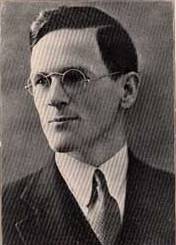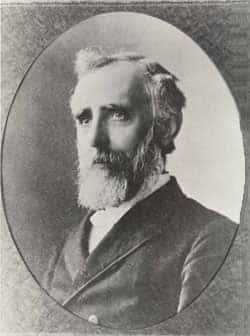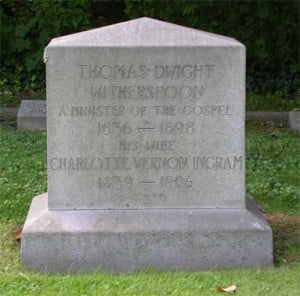In His Time, the Lord Will Raise Up a Man.
There is so much that could be told here about our subject today. Samuel Eusebius McCorkle was born in Pennsylvania, near what is now the city of Harrisburg, in 1746. His parents were godly Scots-Irish settlers who raised their children in the fear of the Lord. When Samuel was just nine, his parents moved the family to North Carolina where they settled a 300 tract of forested land and with great labor, turned it into a farm. The family also became members of the historic congregation that would later be known as the Thyatira Church, not far from Salisbury, NC.
Samuel excelled at learning and even taught his brothers and sisters before going off to the College of New Jersey, where he studied under Dr. John Witherspoon. Upon graduation, he studied theology with his uncle in New Jersey, and then began to seek ordination and a pastoral call to serve a church. In God’s providence, he returned to the Thyatira Church to serve there as pastor from 1777 until his death on January 21, 1811.
But what particularly caught my eye as I read through one account of his life was the following paragraph, which brought back a professor’s lesson in seminary. Teaching a course on “The Introduction to Theology” at Westminster Seminary in Philadelphia in the late 1970’s, Professor John Frame noted how often the Lord raises up one man to stand against the tide of unbelief and opposition. Besides some of the obvious Biblical examples of Moses and Daniel, he cited Athenasius and Martin Luther, among others. It is in that same vein that this following account seems so important. Here we have a picture of early America that we may not have seen before, but it is also a picture in many respects much like today:
During the Revolutionary war, and especially from the summer of 1780, when the South became the theatre of conflict, the country was in a state of utter confusion, and vice of almost every kind prevailed to an alarming extent. The civil character of the war, too, gave it a peculiar ferocity, and produced a licentiousness of morals, of which there is scarcely a parallel at the present day. The municipal laws of the country could not be enforced, civil government was prostrated for a time, and society was virtually resolved into its original elements. Mr. McCorkle came out in reference to this state of things in his utmost strength. He preached, prayed, reasoned, and remonstrated–nor were his labours in vain. From the close of the Revolutionary war, and especially from the breaking out of the Revolution in France,–North Carolina, in common with other parts of the country, was overrun with French infidelity. Here again, he stood forth the indomitable champion of Christianity : he not only preached but published in defence of Divine Revelation; and infidelity quailed before him. It has been confidently asserted that more was done, in that part of the country, by his efforts, to arrest this tide of evil, which threatened at one time to sweep every thing before it, than by any or all other opposing influences.
Words to Live By:
Surely our times today are no worse than what you read pictured in the quote above. Then should we think that the Lord’s arm is now too short to save? (Num. 11:23; Isa. 59:1). Surely not! God can still work a mighty work, as great or greater than He did in McCorkle’s day. The only question is, are we waiting on Him in expectant prayer?
“Let us therefore come boldly before the throne of grace, that we may obtain mercy, and find grace, to help in time of need.” (Heb. 4:16)
For Further Study:
A biography of Rev. McCorkle, titled The Prophet of Zion-Parnassus, was written by James F. Hurley and Julia Goode Eagan, and can now be read on the Web, here.
Note: Our Through the Scriptures and Through the Standards sections have now been replaced by RSS feeds which appear at the top of right-hand column.



